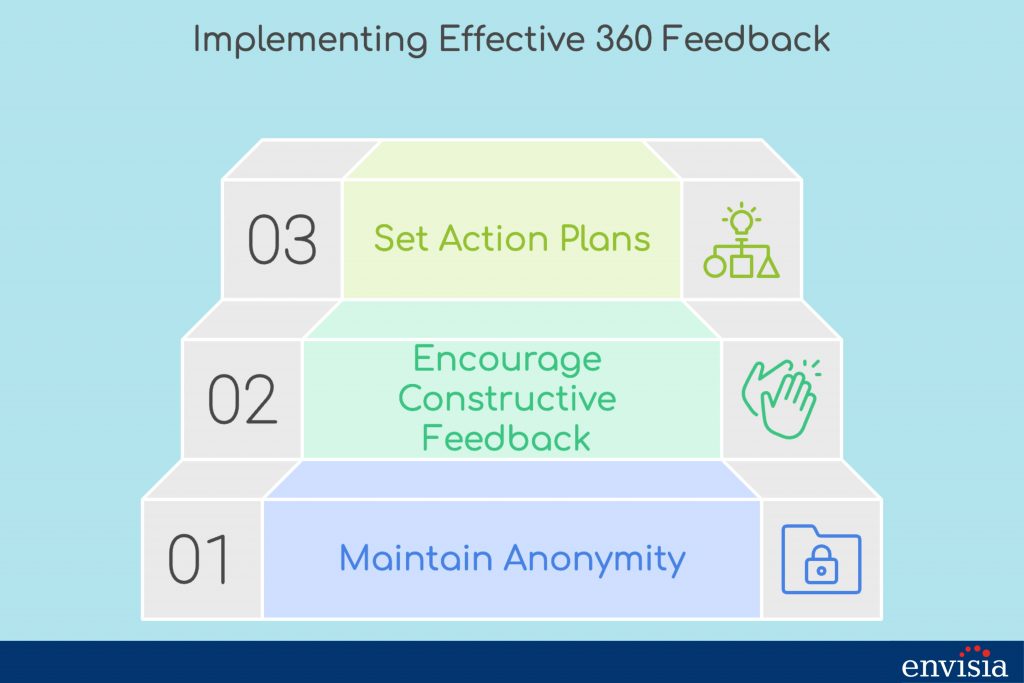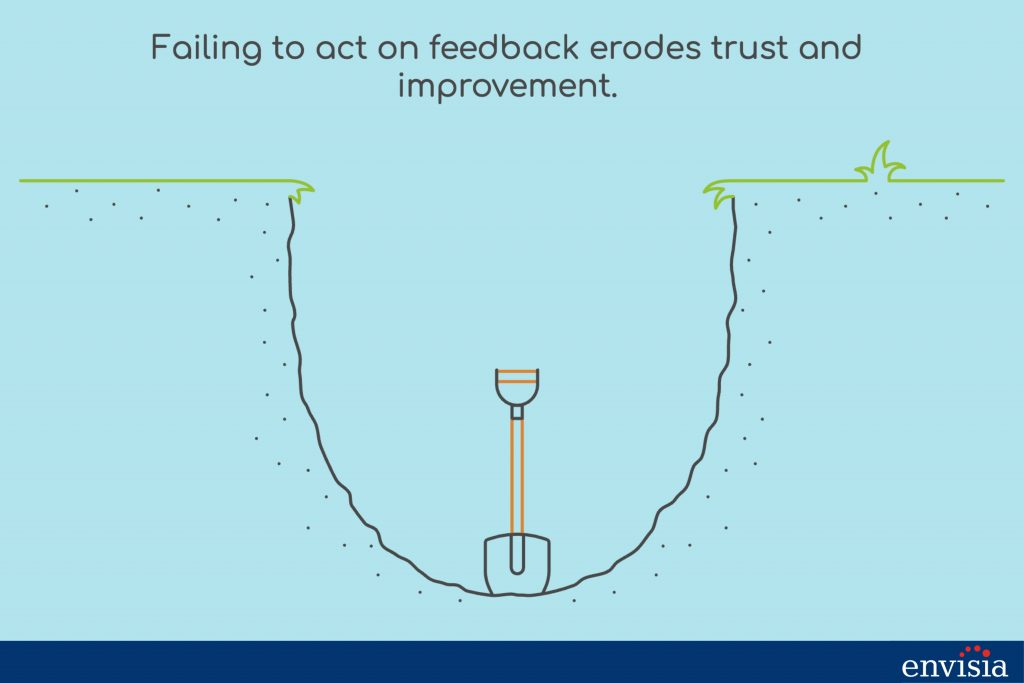Have you ever felt that traditional performance reviews don’t capture the full scope of your contributions or areas for growth? Maybe you’ve experienced the frustration of one-sided evaluations that miss valuable insights from those you work with daily. This lack of comprehensive feedback can hinder personal development and leave you feeling disconnected from your team’s dynamics.
Without input from multiple perspectives, it’s challenging to gain a complete understanding of your strengths and weaknesses. This gap can lead to missed opportunities for growth, decreased employee engagement, and a stagnant work environment. It’s not just about personal advancement; the whole team can suffer when feedback isn’t holistic.
But there’s a solution. By embracing 360-degree feedback, you can unlock a wealth of insights from all around you—peers, direct reports, managers, and even clients. This guide will walk you through the entire 360 feedback process, offering actionable steps to enhance self-awareness, improve team dynamics, and foster a culture of continuous development.
Key Takeaways
- Comprehensive Understanding: Learn how 360-degree feedback provides a well-rounded view of employee performance by collecting input from multiple sources.
- Personal and Team Growth: Discover how implementing a 360 feedback program can enhance self-awareness, leadership development, and team dynamics.
- Best Practices and Implementation: Gain insights into the best practices for conducting 360 feedback, addressing challenges, and using feedback effectively for continuous improvement.
In today’s dynamic work environment, effective feedback is more crucial than ever. Organizations thrive when employees receive meaningful insights that promote growth and development. 360-degree feedback has emerged as a transformative tool that goes beyond traditional performance appraisals, offering a comprehensive view of an individual’s performance by incorporating feedback from multiple sources.
This ultimate guide will delve into what 360-degree feedback is, its benefits and challenges, and provide a step-by-step approach to implementing a successful feedback program. Whether you’re aiming to enhance your leadership skills, improve team cohesion, or foster a culture of continuous improvement, this guide will equip you with the knowledge and tools to make it happen.

What is 360 Degree Feedback?
Definition of 360-Degree Feedback
360-degree feedback is a type of performance evaluation where employees receive confidential, anonymous feedback from the people who work around them. This typically includes their manager, peers, direct reports, and sometimes even customers or suppliers. Unlike traditional performance assessments that rely solely on a supervisor’s perspective, this multi-rater feedback approach provides a well-rounded assessment of an individual’s competencies and behaviors.
The process involves a feedback survey or assessment tool where participants rate the employee on various competencies such as communication, leadership, teamwork, and problem-solving. The aggregated data from these surveys form a comprehensive view of the employee’s strengths and weaknesses, helping them to create a targeted development plan.
Why is Feedback Important?
Feedback is the cornerstone of personal and professional growth. It offers insights that can enhance employee performance and boost employee engagement. When employees receive valuable feedback from multiple sources, they gain a deeper understanding of how their actions impact others. This awareness can lead to improved collaboration, increased productivity, and a more harmonious workplace.
Moreover, feedback helps to build a culture of feedback within an organization. When employees are encouraged to give and receive feedback openly, it fosters trust and transparency. This environment not only benefits individual employees but also contributes to the organization’s overall success.
Key Purpose and How It Differs from Traditional Performance Reviews
The primary purpose of 360-degree feedback is to provide a comprehensive evaluation that traditional reviews often miss. While traditional appraisals focus on the manager’s viewpoint, 360-degree feedback incorporates perspectives from various stakeholders, offering a more complete picture of an employee’s performance.
This approach addresses the limitations of traditional performance reviews by highlighting areas that may not be visible to a single evaluator. It emphasizes behaviors and competencies that contribute to team success, not just individual achievements. By doing so, it supports more effective performance management and promotes a collaborative work environment.
Benefits of 360 Feedback
Benefits for Employees and Leadership Development
Implementing a 360 feedback program offers numerous benefits for both employees and leaders. For employees, it provides actionable insights into their strengths and weaknesses, enabling them to focus on areas that need improvement. This comprehensive feedback helps in crafting a personalized development plan, which can lead to career advancement and increased job satisfaction.
For leadership, 360-degree feedback serves as a development tool that can enhance leadership skills and effectiveness. Leaders gain a deeper understanding of how their actions impact their team, allowing them to make adjustments that improve team performance. This process fosters a culture of continuous improvement and supports succession planning.
How 360 Feedback Improves Self-Awareness, Team Dynamics, and Retention
By receiving feedback from various sources, employees develop greater self-awareness. This understanding promotes better communication and collaboration, positively affecting team dynamics. Teams that communicate effectively are more cohesive, productive, and innovative.
Furthermore, organizations that invest in their employees’ development often see higher levels of employee engagement and retention. Employees who feel valued and supported are more likely to stay with the company, reducing turnover costs and preserving institutional knowledge.
Disadvantages of 360-Degree Feedback
Disadvantages of 360 Feedback in Performance Evaluations
While 360-degree feedback has many advantages, it’s essential to be aware of potential drawbacks. One significant concern is the possibility of bias in feedback from colleagues, which can stem from personal relationships or competition. Additionally, without proper training, feedback providers may offer input that is not constructive or actionable.
Another issue is that the process can be time-consuming, requiring significant resources to administer effectively. If not managed well, it can lead to feedback fatigue among employees, diminishing the quality of the responses.

Implementing a 360-Degree Review Program: Step-by-Step
Embarking on the journey of implementing a 360-degree feedback program can seem daunting at first. However, breaking it down into manageable steps can help you create a seamless and effective process. Let’s delve into how you can set up a 360 process that fosters growth and development within your organization.
Setting Objectives and Identifying Participants
The first step in the 360 process is to set clear objectives. What do you hope to achieve with this feedback program? Are you aiming to enhance leadership skills, improve team dynamics, or identify areas for employee development? Defining your goals will guide the entire review process and ensure it aligns with your organization’s needs.
Next, identify the participants. Typically, a 360-degree feedback process involves the employee, their manager, peers, direct reports, and sometimes even clients or suppliers. Including feedback from several perspectives provides a comprehensive view of the employee’s performance and behaviors.
Questionnaire Design and Sample Questions
Designing an effective 360 survey is crucial. The survey should cover key competencies relevant to your organization’s success. Common categories include:
- Communication: How well does the employee convey ideas and listen to others?
- Teamwork: Does the employee collaborate effectively with colleagues?
- Leadership: How does the employee inspire and guide others?
Include both quantitative ratings and qualitative questions to encourage candid feedback. For example, ask raters to provide actionable feedback by citing specific examples of strengths and areas for improvement. This approach helps employees understand the feedback and how they can apply it.
Feedback Collection and Confidentiality
Collecting feedback in a way that ensures confidentiality is essential. Ensure that feedback is anonymous to promote honesty and openness. Utilizing online tools can help make 360 feedback anonymous, safeguarding the identities of the raters and increasing the likelihood of receiving high-quality feedback.
Analyzing and Discussing Feedback for Development
Once you’ve gathered the feedback, it’s time to analyze the data. Look for patterns and recurring themes in the responses. When sharing feedback, focus on both strengths and areas for growth. It’s important that the employee’s manager provides feedback in a supportive manner, helping the employee interpret the results.
Encourage the employee to reflect on the feedback and develop an action plan. Receiving the feedback is just the beginning; the true value comes from applying it towards personal and professional development.

Best Practices for Successful 360 Feedback
Implementing best practices ensures that your 360-degree feedback program is effective and well-received by all participants.
How to Maintain Anonymity
Maintaining anonymity is critical for honest and open feedback. Use third-party platforms or tools that offer a 360-degree feedback solution with built-in confidentiality features. Assure participants that their responses are anonymous to encourage transparency and candidness.
Encouraging Constructive, Actionable Feedback
Training participants on how to give feedback is essential. Without guidance, feedback might be vague or unhelpful. Educate your team on the importance of feedback that is specific, behavior-focused, and constructive. Encourage them to think about how their insights can help employees grow.
Following Up and Setting Action Plans for Continuous Improvement
Feedback doesn’t lead to improvement unless it’s followed by action. Work with employees to create development plans based on their feedback. This might involve setting specific goals, seeking mentorship, or pursuing training opportunities. Establishing a culture of continuous feedback ensures ongoing development and keeps the momentum going after the initial 360-degree performance review.
Tools and Templates for 360 Review
Leveraging the right tools can streamline your 360-degree feedback program and enhance the experience for all involved.
Recommended Tools
Consider utilizing specialized software to manage the process efficiently. Some feedback solutions include:
- SurveyMonkey: Offers customizable surveys with anonymity features.
- Lattice: Provides performance management tools including 360 reviews.
- Envisia Learning: Specializes in assessments and development tools, offering a comprehensive 360-degree feedback process.
These platforms offer a 360-degree feedback system that simplifies data collection and analysis, making it easier to act on the insights gained.
Sample 360 Feedback Template Structure
Creating a structured survey template ensures consistency and comprehensiveness. A typical feedback questionnaire might include:
- Rating Scales: Assess competencies on a scale (e.g., 1-5).
- Open-Ended Questions: Provide space for candid feedback and specific examples.
- Self-Assessment: Encourage employees to reflect on their own performance.
Using a consistent template helps in comparing data across individuals and teams, making your 360 review system more effective.

Common Mistakes to Avoid
Implementing a 360° feedback program can significantly enhance your organization’s performance and development efforts. However, avoiding common pitfalls ensures your 360 assessment is beneficial rather than detrimental. Let’s explore some mistakes to watch out for during your 360 review process:
Not Following Up on Feedback
One major mistake is failing to act on the feedback. Remember, feedback doesn’t lead to improvement without action. Ensure there’s a plan to address the insights gained and monitor progress over time.
Misusing Feedback as Punishment
Feedback should be a tool for employee development, not a means of punishment. Misusing it can erode trust and discourage honest participation. Focus on growth and positive change.
Lack of Training for Participants on Constructive Feedback
Without proper training, participants may not know how to provide actionable feedback. Invest time in educating them on how to share insights that are specific and helpful. This not only improves the quality of feedback but also fosters a supportive environment.
Frequently Asked Questions
How often should 360 feedback be conducted?
The frequency depends on your organization’s needs. Generally, conducting a 360-degree feedback process annually or biannually allows enough time for employees to work on development areas before the next review.
Is 360 feedback suitable for small businesses?
Absolutely. Small businesses can benefit from 360-degree feedback as it promotes a culture of openness and continuous improvement. It can be scaled to fit the size of your team and tailored to your specific goals.
How can feedback data be effectively used?
Feedback data should inform development plans, training programs, and organizational strategies. Remember, feedback can be useful only if it’s analyzed thoughtfully and acted upon. Use the insights to drive positive change and support your team’s growth.

Conclusion: Using 360 Feedback to Drive Growth and Development
Embracing a 360 program can be a transformative step for your organization. By creating a structured and supportive feedback system, you empower employees to understand their strengths and areas for improvement. This holistic approach fosters a culture of continuous learning and development.
Remember, the success of a 360-degree feedback program lies in careful planning, clear communication, and a genuine commitment to growth. When implemented thoughtfully, it becomes a tool for employee empowerment, driving both personal and organizational success.
Additional Resources
- For more about employee development, visit Envisia Learning.
- Read more about how 360 feedback differs from traditional methods here.
